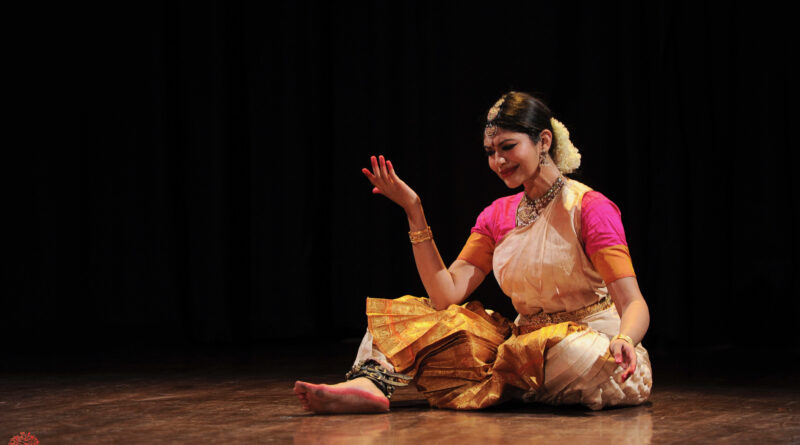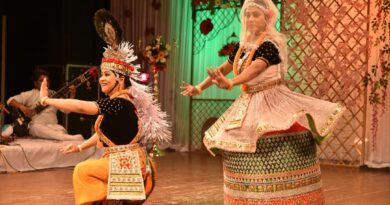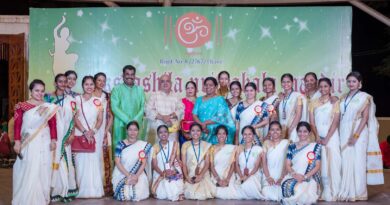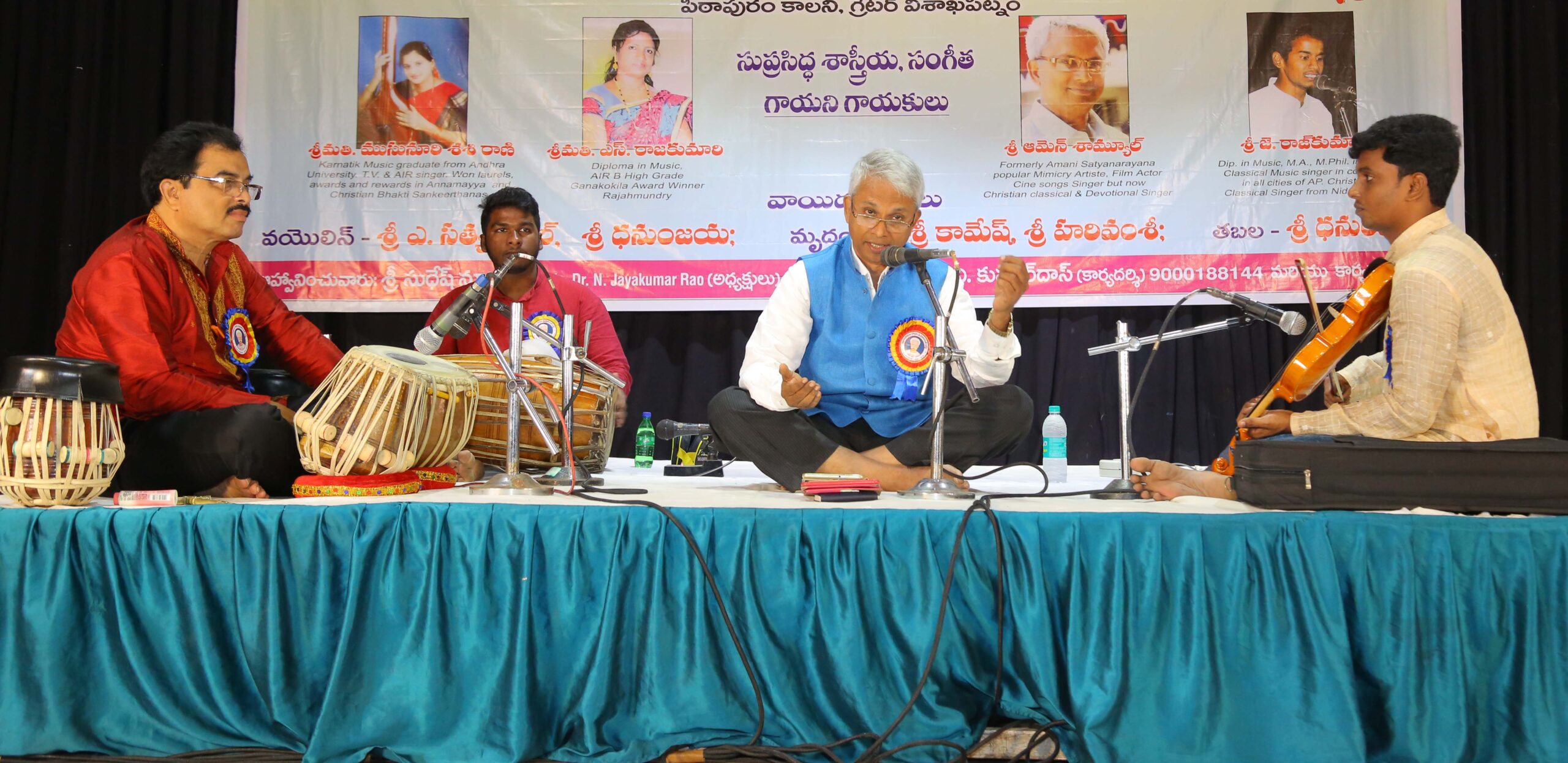Venkateswara of Seven Hills and Panduranga Vitthala of Pandharpur
Text: Dr Sunil Kothari
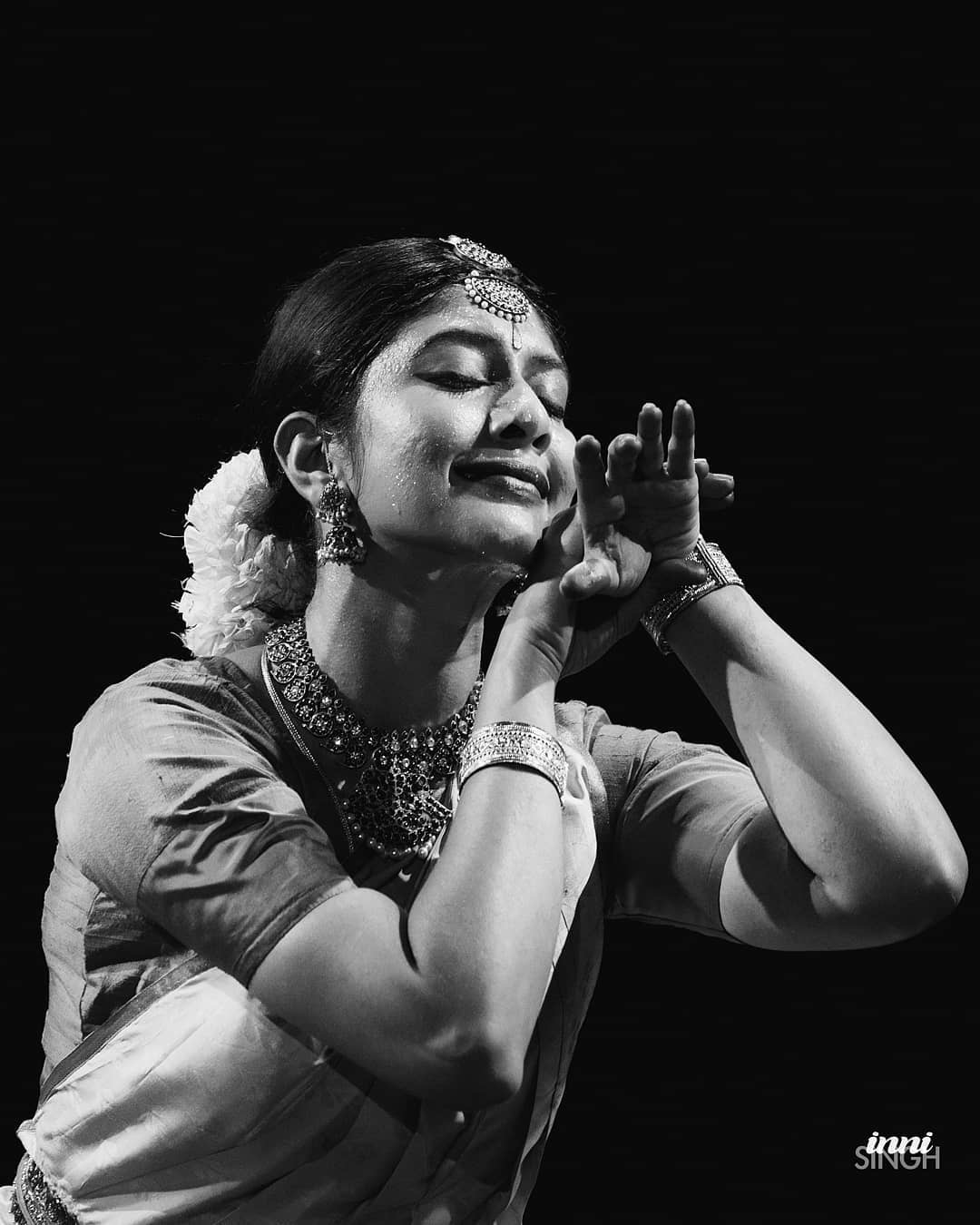
Never-say-die art consultant Usha RK has come up with another dance production of Divya Kshetras Tirupati and Pandharpur. Roping in bright young dancers Dakshina Vaidyanathan Baghel for Tirupati and Arundhati Patwardhan for Pandharpur, Usha led the audience to these two pilgrimage places in an engaging manner. Both the artists have in their mothers’ seasoned dancers. And both the daughters have done their mothers proud.
Usha’s commentary on Tirumala Devasthanam was thoroughly researched with excellent Annamacharya keertanas to go with dancing. Ditto for Pandharpur and Tukaram’s abhangas and ovis, vachanas, with vachikabhinaya. They evoked bhakti rasa and in terms of music, whereas Dr S Vasudeva and other accompanists offered melodious music highlighting Annamacharya keertanas, Arundhati’s Pune based musicians brought a whiff of fresh air with Marathi abhangas which audience clapped and tapped with their feet. The joyous mood lingered on and both the dancers kept us in thrall with their dancing.
Dakshina displayed imaginative approach, carving the sculptures of dwarapalakas on the walls of the temple, the foundation on four directions, taking a broad posture as seen in Kathakali, moving with ease in four directions and created the temple on the seven hills. The visuals brought to audience memories of visiting the temple. The statistics of rupees in countless numbers as Hundi donated to the temple were transformed in nritya abhinaya. But what lingered most in memory was Alamelu along with Balaji going to the temple, her head was struck whereby she lost a small bunch of hair and Lord immediately replaced the patch with hair. We now know why hair is donated at Tirupati.

One more sequence of the union of the Lord and Alamelu. The poet says in a dignified manner. Alamelu says why do I need ornaments? My Lord holds my wrists with his fingers, why do I need waistband? My Lord puts his arm around my waist and embraces me. He looks constantly at my face and his gaze unites me with him. Dakshina succeeded in creating shringara subtly. And the recitation of Suprabhatam, when Lord and Alamelu after their night have to get up to give darshan to the devotees was the most appropriate poetic touch. The blowing of a conch, ringing of the bell and the devotional singing were mesmerising. One was tuned to it and was immersed in bhakti-rasa. Bravo to the four musicians and to Dakshina for such delightful experience.
Arundhati Patwardhan, daughter of Sucheta Chapekar, dressed in typical Maharashtrian saree with a musical rendition of Tukaram’s abhangas transported us to Pandharpur. The characteristic abhanga singing has a magical impact upon those who have been exposed to it. You need not know even the language. Arundhati made you see all the shades of a devotee’s love for the Lord. Interspersing the songs with Ovi, vachanas, she displayed her vast range of abhinaya. Humility, self-pride, complaint, love, affection, rebuking, chiding, sulking, surrendering et al were at her beck and call. We were convinced that when Lord came to see Panduranga, he threw a brick and asked him to wait standing on it till he completed daily rituals offering flowers, naivedya, fruits and arati. So the Lord stood there in it, meaning brick, and is known as Vithoba. Whoever knows this story, relishes when presented with such artistry?

Though the music was recorded and at one point there was a technical hitch, nothing mattered. The mood that Arundhati had established was restored in a trice. Both the dancers gave their best. One returned from the auditorium with joy having received the glimpses of the divine gods through dance and music.
Usha mentioned that this performance was specially organised as she had completed 40 years of her engagement with performing and allied arts, going through travails, tribulations, challenges and sorrows but all led her finally to joy and bliss. To strike a personal note I have known Usha for past thirty years. When my books were launched in Mumbai, she was there. She had studied Bharatanatyam under Kalyanasundaram, so had I. When she was assisting Protima Bedi to establish Nrityagram, I had stayed with her at her residence in Bangalore. I had seen her working round the clock helping one and all at Nrityagram, taking care of all details. I was much impressed by her various abilities and devoting herself completely to the task assigned to her. After parting with Nrityagram, she moved to Dubai, worked with corporate, gained experience and later on she moved to Bangalore, where she had started organising theme-based performances taking Bhadrachala Ramadas’s compositions, Tyagaraja’s compositions and explored the series of Divya flowers, vahanas and pilgrim places juxtaposing with deities, sthala puranas and created a niche for choreographing such presentations with young dancers. I have thoroughly enjoyed this performance. Usha has found her calling and here is to wish her all the best in such artistic endeavours.

